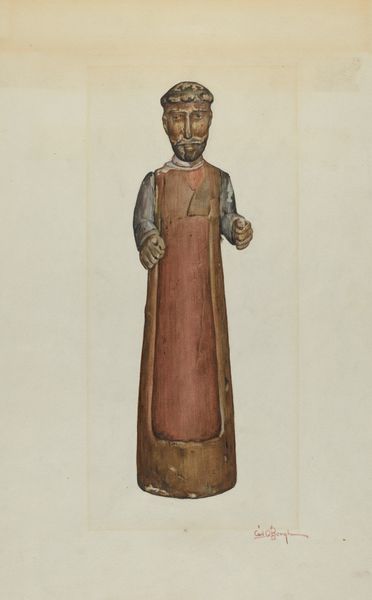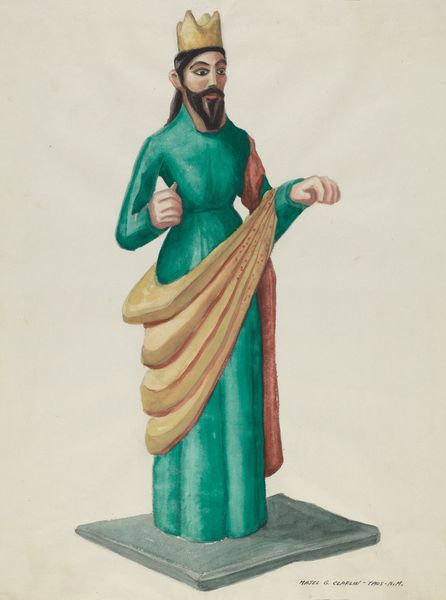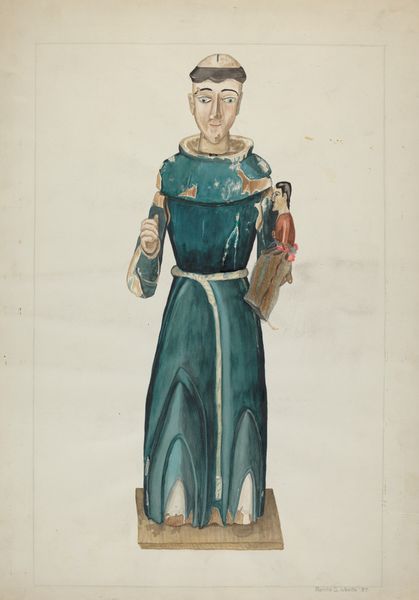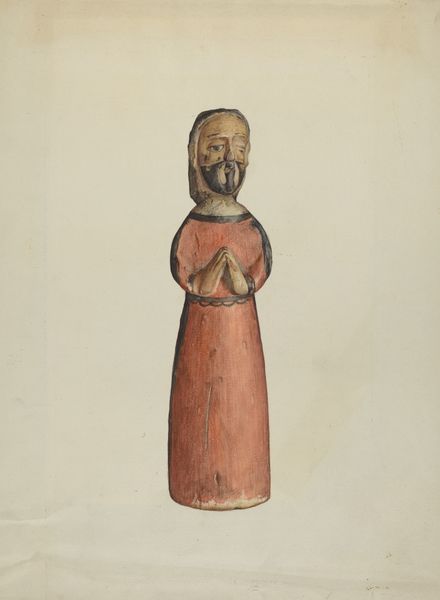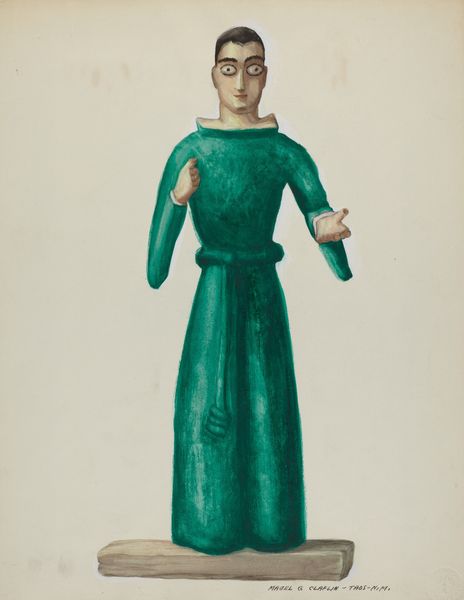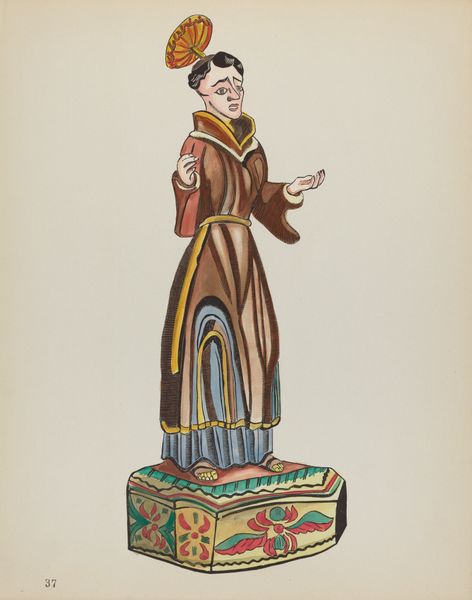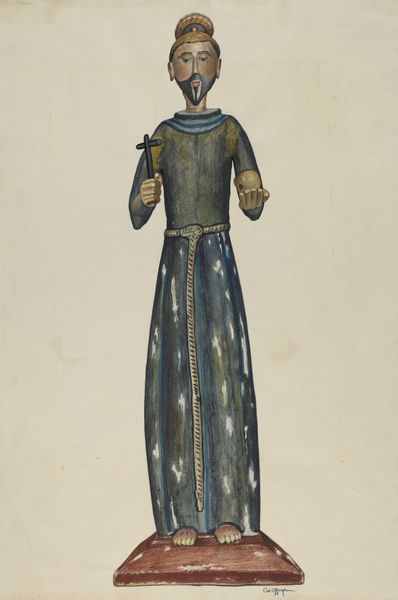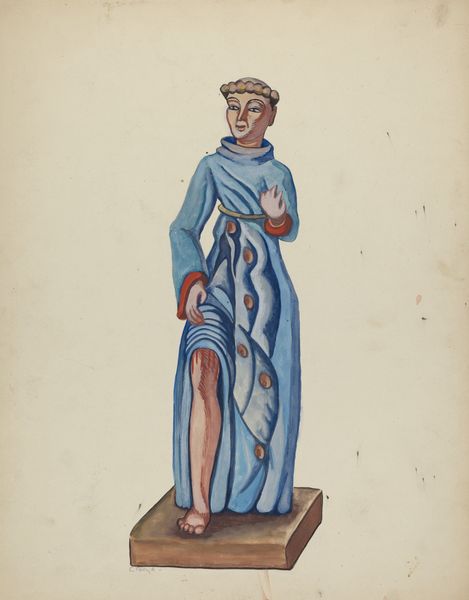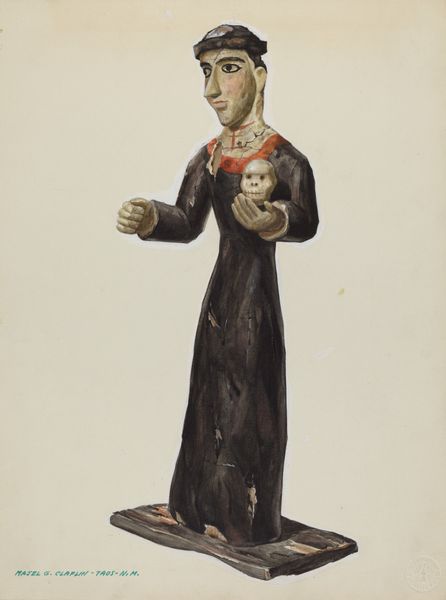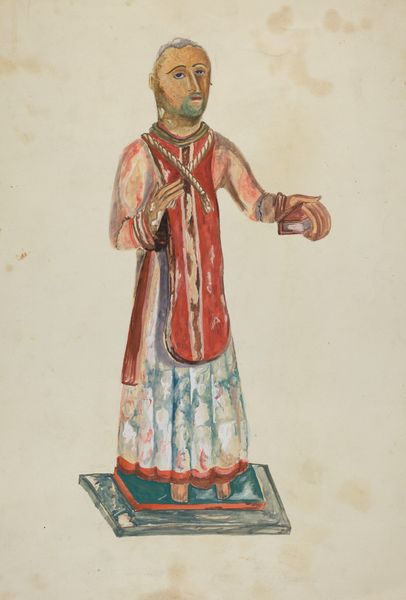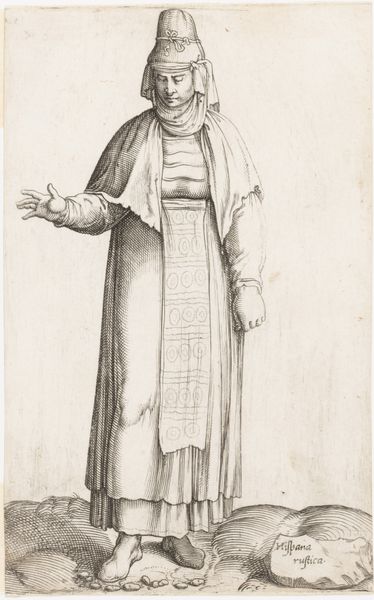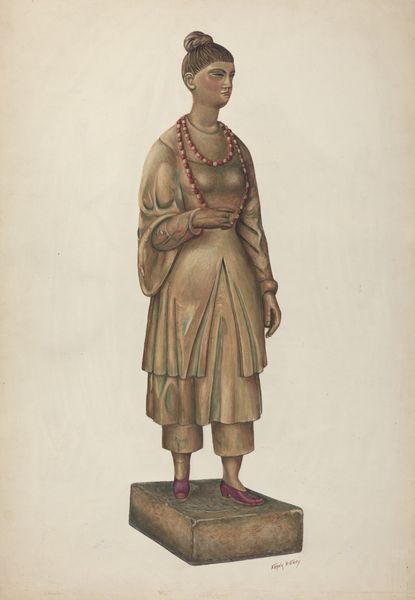
drawing, watercolor
#
portrait
#
drawing
#
figuration
#
watercolor
#
coloured pencil
#
watercolour illustration
#
watercolor
Dimensions: overall: 53.1 x 37.8 cm (20 7/8 x 14 7/8 in.) Original IAD Object: 14 1/2"high; 5"wide at base
Copyright: National Gallery of Art: CC0 1.0
Editor: This is Carl O’Bergh’s "Bulto," created in 1938 using watercolor and drawing techniques. It strikes me as a very clean, almost technical rendering of a figure. How should we interpret it? Curator: Considering the time it was created, it's important to look at this within the context of the WPA Federal Art Project. The Project commissioned artists like O'Bergh during the Depression. Do you notice anything familiar about the man's pose, style, or costume? Editor: Well, the term "Bulto" suggests a religious sculpture, possibly of a saint, given its Hispanic origins. The rendering appears quite intentional, almost ethnographic, but maybe a bit stiff. Curator: Precisely. Many artists employed by the WPA documented and celebrated regional cultures, particularly in the Southwest. How might that context influence your view of it? Editor: Ah, so O’Bergh was potentially aiming to catalog or legitimize folk traditions, showcasing them to a wider American audience? It could have served as an educational or even a patriotic purpose. Was there a conscious push towards a unified, idealized representation of America through such artwork? Curator: Exactly. Consider the public role of art during that time. There was often a complex tension between celebrating regional diversity and promoting a unifying national identity. Was this bulto viewed as authentic folk art or something “elevated” to fine art status? These distinctions matter. Editor: That gives me a whole new perspective! I hadn’t considered the artwork as a potential piece of social or cultural propaganda, if that’s the right word. Curator: It’s certainly worth considering, and highlights the layered meanings an artwork can hold based on historical context. Editor: Thanks, that's definitely something I’ll be keeping in mind going forward. Curator: Indeed, paying attention to institutional motivations can unlock so much meaning within a seemingly simple artwork.
Comments
No comments
Be the first to comment and join the conversation on the ultimate creative platform.
